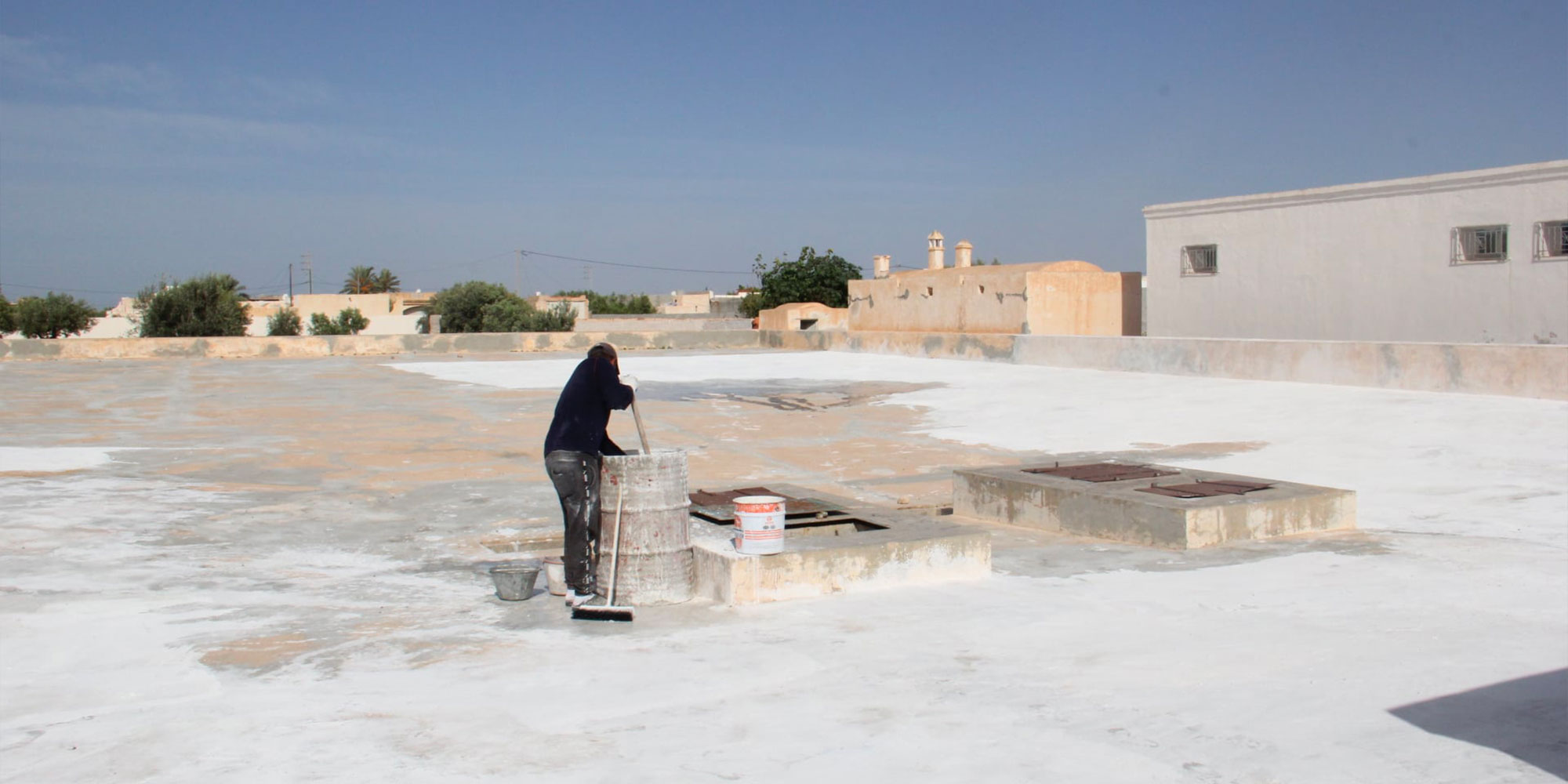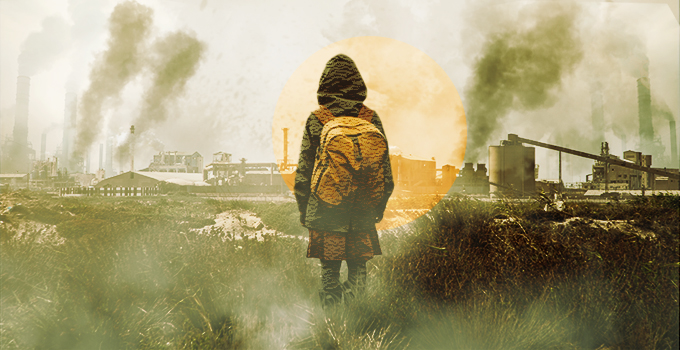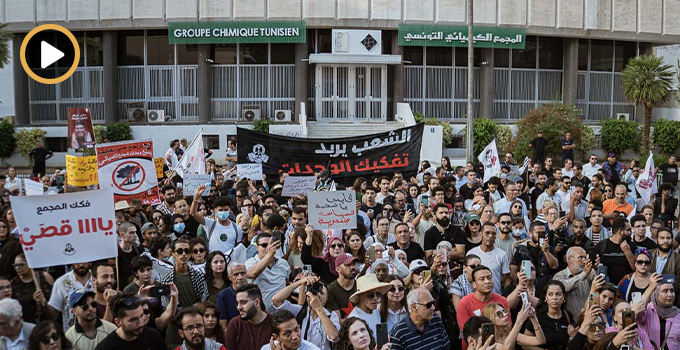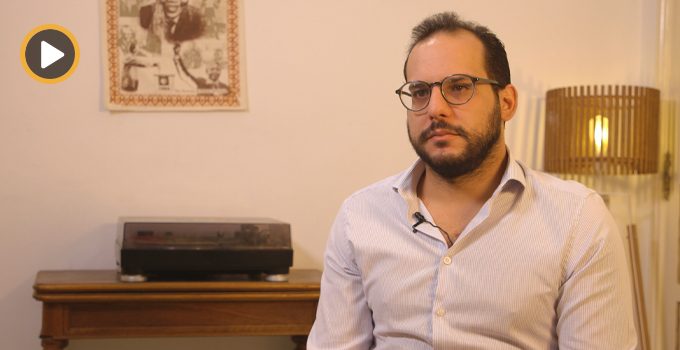Once a day, carrying a plastic jug in each hand, fifty-something Fadhila makes her way to the public water cistern (fesguia, plural fsegui) in Beni Maaguel. Situated before a corner store and several homes weathered by salty air, the cistern has become a pit stop where neighbors share news. Today, Fadhila is alone as she pulls on the rope. Having filled the first jug, she gazes up towards the sky where clouds have lessened the sun’s intensity. A cool breeze stirs the air. She pushes up the sleeves of her jebba and returns to the task at hand. « It doesn’t make a difference whether or not we are connected to SONEDE. Water cuts are so frequent that I am always sure to have extra on hand » Fadhila explains. In 2019, the Association Jlij for the Marine Environment (AJEM) restored this abandoned cistern which dates from the colonial era. The resuscitated fesguia has been a blessing for residents with inadequate access to water.

« People were so happy when the restoration work began. We took turns preparing meals for the workers » Fadhila recalls. Through its « Fesguietna » project, AJEM rehabilitated 15 cisterns, 12 of which are public and three others located on school campuses. The concept is simple: fsegui are underground tanks that collect and conserve rain water. Rectangular in shape, built of stone and with openings to collect rainwater, the cisterns have a surface area ranging from 100 to 1,000m2. The larger and deeper the reservoir, the greater its storage capacity. With a volume of 200m3, the cistern in Beni Maaguel holds enough water to cover the needs of a dozen families. According to the association, the restoration of 15 cisterns ensures consistent, clean access to potable water for over 25,000 of Djerba’s residents, including 10,000 women and over 1,500 students.
Restoration process
Before this groundwork could begin, however, the association had to locate and make an inventory of all fsegui on the island. Recalling this tedious undertaking, Faiçal Ghzaiel smiles and says: « In the beginning, all we had were the handwritten lists prepared by Djerba’s different CRDAs [Regional Agricultural Development Commissions]… Some of them dated back to the 80’s ». Thanks to these lists, they identified 121 fsegui. Questioning locals, however, brought that number to over 200. For AJEM, it is the responsibility of public authorities to know the number of cisterns on the island: « With this information, we can know our storage capacity and plan ahead for periods of drought ». And yet many cisterns, especially those that were built inside mosques, are not recorded in official documents. « Inside one mosque in Beni Maaguel, we discovered six cisterns! » Faiçal Ghzaiel exclaims. The association was thus able to compile a « digital mapping » of all 206 fsegui inventoried, including vital information about each one: condition, use, architectural type, dimensions, storage capacity and GPS coordinates.

Once the inventory was complete, AJEM had to decide which cisterns to restore. « Unfortunately, most of the fsegui were not in use and required significant restoration work » recounts AJEM member and engineer in natural resource management Meriem Zrouga. With the installation of running water on the island, the cisterns were gradually neglected. Some had been in disuse for decades. « We decided to select five cisterns within each commune, prioritizing those nearby to homes », Zrouga continued. The cost of restoration—ranging from 6,000 to 20,000 dinars for the most dilapidated structures—also factored into the decision-making process. Beyond its focus on access to water, AJEM also aims to preserve the island’s architectural heritage and promote traditional know-how: « These cisterns bear witness to the ingenuity of our ancestors », Zrouga marvels. In Djerba, cisterns in the public space are symbolic of the will to cultivate self-sufficiency that is unique to island life.
Catching rainwater… without rain?
Back in Beni Maaguel, Fadhila has finished filling her containers. « I begin each day with tasks requiring a lot of water », she tells us. She does so as quickly as possible: by 6am on some mornings, the tap provides no more than a light stream of water. « Before, these problems occurred mostly in summertime. But for a while now, water cuts have taken place year-round ». Fadhila returns home, just about a hundred meters from the fesguia. Others arrive on foot avoiding large puddles left by recent heavy rains. « It’s a blessing, look at our trees, they are radiant now that they have quenched their thirst. The earth can finally breathe », one of them exclaims.

Association members are reassured: « Beni Maaguel residents called to tell us that the cistern was nearly empty. A cistern must never be left without water, otherwise there is a serious risk of cracks », Faiçal Ghzaiel explains. Unexpected April rains refilled the reservoir without the team having to call in tankers carrying lesser quality water. « Fsegui are much better adapted to torrential rains than are dams », Ghzaiel notes. Whereas dams are filled by slow, prolonged rains, a medium-size cistern can be refilled by torrential rains within a few hours.

With an annual rainfall level of 200mm, Djerba stands to gain from storing its rainwater. But how to ensure that the cisterns remain full throughout the year, even during long months without so much as a drop of rain? « We have talked to citizens about the importance of conservation and using a reasonable amount of water », says Meriem Zrouga. « Some consume in excess, but this doesn’t mean we’re going to station a guard out there to monitor water use. We are counting on individual responsibility », Ghzaiel tells Nawaat. Since some cisterns are less frequented than others, the association plans to transfer water from one fesguia to another as needed.
« Fsegui », a response to water stress
Another of the association’s objectives in restoring the fsegui is to reduce pressure on water resources. According to a report by the Ministry of Agriculture [1], Tunisia is in a situation of high water stress, with 460m3 of water available per person per year. Agriculture consumes 80% of available water resources, industry 5%, tourism 2%, while household use makes up for just 13%.
And yet it is citizens who end up paying the price for water scarcity with recurring water cuts. « Cisterns will not solve the water problem in its entirety. They do, however, enable those without access to benefit from a free water supply, slow down the over-exploitation of natural resources, and minimize the use of plastic bottles », Ghzaiel points out.
Tunisians consume an average 227 liters of bottled water per person per year, placing the country fourth worldwide in this category. A fact nothing short of absurd when one considers what it takes to produce one liter of bottled water: 100ml of petroleum, 80g of coal, 42L of gas and…two liters of water! « Having cisterns near to homes will encourage the reflex of bringing water home in a reusable container rather than going to purchase water at the store », says Ghzaiel, who sees the restoration of fsegui as a simultaneously social, economic and environmental strategy combatting the rampant commodification of water.

[1] Water Sector – National Report, 2020. Ministry of Agriculture, Hydraulic Resources and Fishing. Office of Planning and Hydraulic Balance.





iThere are no comments
Add yours